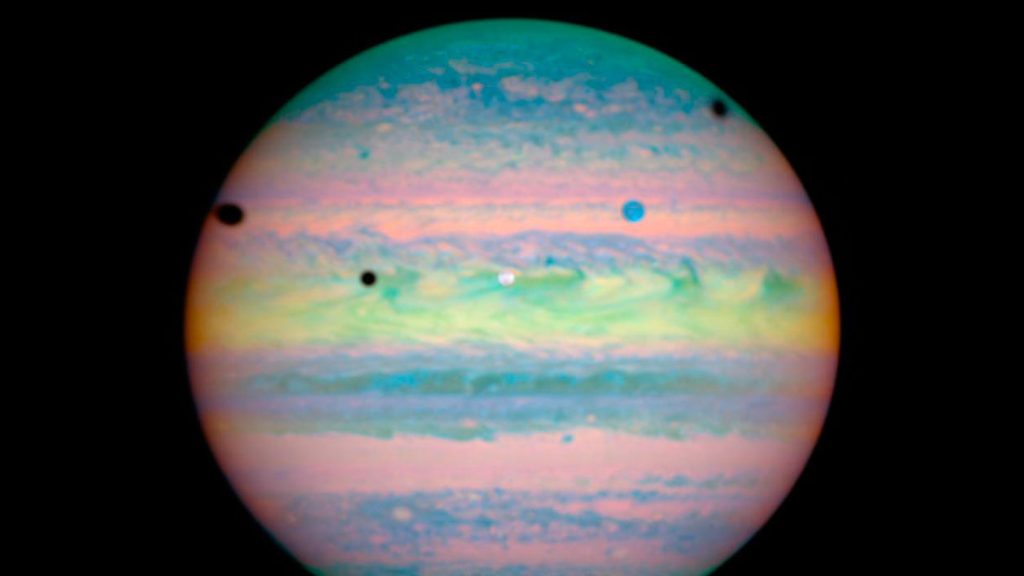Jupiter’s 13th moon was discovered by astronomer Charles Kowal in September and was initially known as J-XIII. Further investigation revealed that this moon, now named Leda, orbits the planet in the same direction as its rotation. This discovery led to the identification of a total of 95 moons of Jupiter, along with thousands of smaller objects in orbit around the planet. The Voyager spacecraft uncovered a few moons in 1979, and recent telescope surveys have revealed more moons at a time. Detailed studies of the largest moons, such as Io and Europa, have revealed interesting features like lava lakes and icy surfaces. Future missions from NASA and the European Space Agency will further study these moons to search for signs of habitability.
The moons of Jupiter have long been a source of fascination for scientists and space enthusiasts alike. The discovery of Leda was just the beginning of a series of discoveries that have expanded our knowledge of the moons surrounding Jupiter. The bountiful number of moons and smaller objects in orbit around the planet have provided researchers with a wealth of data to study and analyze. The information gathered from these studies has led to a better understanding of the moons’ unique features and characteristics.
The Voyager spacecraft’s discovery of a few moons in 1979 marked a significant milestone in our exploration of the Jupiter system. These initial discoveries paved the way for future telescope surveys that have revealed dozens of moons at a time. Detailed studies of the largest moons, like Io and Europa, have uncovered interesting geological features such as lava lakes and icy surfaces. These findings have sparked further interest in exploring these moons in greater detail to search for signs of habitability.
Future missions from NASA and the European Space Agency, such as the Europa Clipper mission and the Juice mission, are set to arrive at Jupiter’s moons in the coming years. These missions will focus on studying moons like Europa, Callisto, and Ganymede to gather more data about their composition, structure, and potential for supporting life. The information gathered from these missions will be instrumental in advancing our understanding of the Jupiter system and potentially uncovering new insights into the possibility of habitable environments on these moons.
The study of Jupiter’s moons is a critical area of research in planetary science, and the upcoming missions to explore these moons will provide valuable data for scientists to analyze. The discoveries made by studying the moons of Jupiter have already deepened our understanding of the planet and its surrounding system. By continuing to support science journalism and research in this field, we can further expand our knowledge of the universe and potentially uncover new insights into the possibility of life beyond Earth. Subscribing to publications like Science News and supporting scientific literacy initiatives is essential in ensuring that important societal decisions are made with science in mind.
Overall, the discovery of Jupiter’s 13th moon, Leda, has opened up a world of possibilities for further exploration and discovery in the Jupiter system. The identification of a total of 95 moons around the planet, along with thousands of smaller objects in orbit, has provided researchers with a vast trove of data to study. Future missions from NASA and the European Space Agency will focus on studying specific moons like Europa, Callisto, and Ganymede to search for signs of habitability. By supporting science journalism and research in this field, we can continue to expand our understanding of the universe and potentially uncover new insights into the possibility of life beyond Earth.


